Collection
Date
Location
Type
37 results
Remembering 1807
In 1807 Britain legally abolished the slave trade, although it continued to participate in and profit from the institution of slavery. In 2007 the British government committed public funds to mark the bicentenary of the Slave Trade Act. The Remembering 1807 project has collected and archived material relating to the many events and activities that took place during 2007. These records help us to locate and understand the place of slavery, the slave trade and its abolition in the UK’s public history, commemorative traditions and popular memory. Background to the collection...
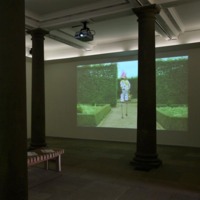
Crop Over
2007 saw a number of different projects taking place at Harewood House in West Yorkshire, home of the Lascelles family. The bicentenary was used as an opportunity to explore the family connections with the transatlantic slave trade and the sugar plantations of the West Indies.
The art…
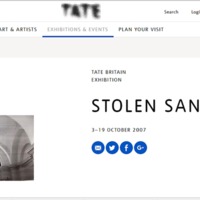
Stolen Sanity
In 2007 the artist Faisal Abdu'Allah was commissioned by Tate Britain to work collaboratively with a group of young people from Park High School in Harrow and St George's Roman Catholic School in Westminster to explore ideas related to the commemoration of the 1807 Abolition Act. The group engaged…
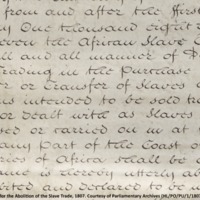
For Love of Sugar
Commissioned by 2007's City of London Festival, artist Satch Hoyt created several sculptures made only of sugar. In St Paul's Cathedral, life-sized portraits of influential black figures - including Olaudah Equiano, Ignatius Sancho and Mary Seacole - were made of painted sugar cubes. Hoyt also…
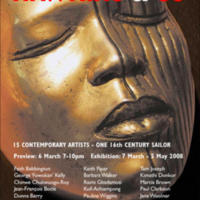
Hawkins & Co
Curated by artist Kimathi Donkor, and first exhibited at London’s Elspeth Kyle Gallery, Hawkins & Co referred to the Elizabethan mariner Sir John Hawkins, whose 16th century voyages to Africa and the Caribbean pioneered the British slave trade. In 2008, an expanded version of the project,…
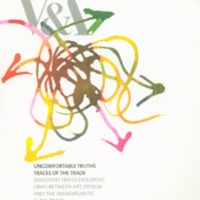
Uncomfortable Truths
Uncomfortable Truths at the Victoria and Albert Museum sought to expose how embedded the transatlantic slave trade was within British culture during the 18th and 19th centuries through art and design. A series of five trails - 'Traces of the Trade' - explored the permanent collections on display…
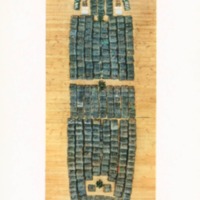
La Bouche du Roi
La Bouche du Roi was created by artist Romauld Hazoumé, who lives and work in the Republic of Benin, West Africa. The multi-media artwork is named after a place on the coast of Benin from where enslaved Africans were transported. It comprised 304 plastic petrol can 'masks', each representing a…
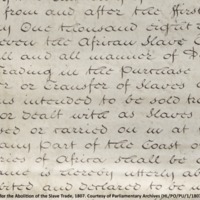
BOUND
Curated by Predrag Pajdic, BOUND was an exhibition of works by international contemporary artists representing personal perspectives on the physical and psychological impact of slavery on humanity, in historical and modern contexts. BOUND incorporated archival material, conceptual work, photography,…

Abolition
Abolition was an art project devised and led by artist Jack Brown, in collaboration with Tidemill Primary School in Deptford. It took place during Black History Month 2007, and aimed to commemorate the abolition of the transatlantic slave trade while recognising the existence of modern day slavery.…
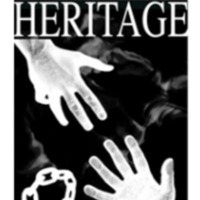
Dark Heritage
Dark Heritage from Bee Arts Community Interest Company comprised The DARK, a sonic art installation, and accompanying participatory educational activities. The DARK touring installation is a pitch black space designed to bring home the horrors of the transatlantic slave trade in the 18th century.…
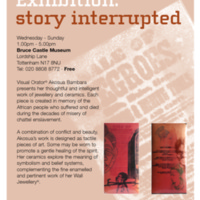
Story Interrupted
Story Interrupted was an exhibition of jewellery and ceramics by visual orator Akosua Bambara at Bruce Castle Museum. Each piece was created in memory of African people who suffered and died in enslavement.
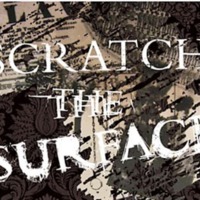
Scratch the Surface
Scratch the Surface at the National Gallery brought together two portraits, Johann Zoffany's 'Mrs Oswald' (1763-4) and Sir Joshua Reynolds's 'Colonel Tarleton' (1782), to explore the complex relationship between these sitters and slavery. Colonel Tarleton, as MP for Liverpool in the 1790s, argued in…
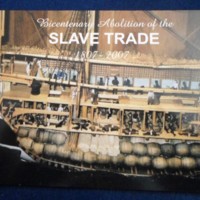
Response of Jacqueline and Sonia Brooks
As descendants of enslaved Africans, Jacqueline and Sonia Brooks expressed their own independent responses to the bicentenary. Jacqueline designed a limited edition postcard to display the horrors of a slave ship. Sonia wrote the poem Amazing Trade, which was performed during the National Maritime…
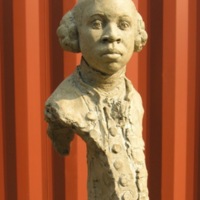
OLAUDAH EQUIANO - African, slave, author, abolitionist
This sculpture of the abolitionist Olaudah Equiano was made by London-based sculptor Christy Symington in 2006 to mark the bicentenary of the abolition of the British transatlantic slave trade, with the intent to further share Equiano's story. It was first exhibited by selection at the Society of…
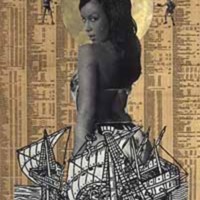
Lace and Slavery
During the Industrial Revolution Nottingham was famous for the manufacture of lace. In 2007 British-Ghanaian artist Godfried Donkor, supported by The New Art Exchange and the Centre for Contemporary Art in the city, investigated the often-neglected connections between this luxurious commodity and…

The Freedom! sculpture
The Freedom! sculpture was created by a group of Haitian artists to represent Haiti's struggle for freedom and human rights. It was commissioned in 2007 by a collaboration of the international development charity Christian Aid and National Museums Liverpool to mark the bicentenary. The Freedom!…
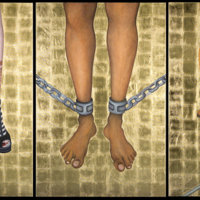
House Slave - Field Slave: A Portrait of Contemporary Slavery
'House Slave - Field Slave: A Portrait of Contemporary Slavery' was created in 2007 by Nicola Green in collaboration with Anti-Slavery International and first exhibited at Dulwich Picture Gallery. The artwork explored the concept of contemporary slavery and the stories of those still enslaved. The…
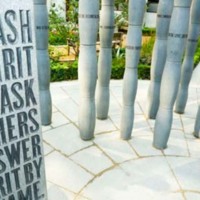
Gilt of Cain
Gilt of Cain was unveiled by the Archbishop Emeritus Desmond Tutu in Fen Court, City of London, in September 2008. The artwork, a collaboration by sculptor Michael Visocchi and poet Lemn Sissay, commemorates the abolition of the transatlantic slave trade. The granite sculpture is composed of a group…